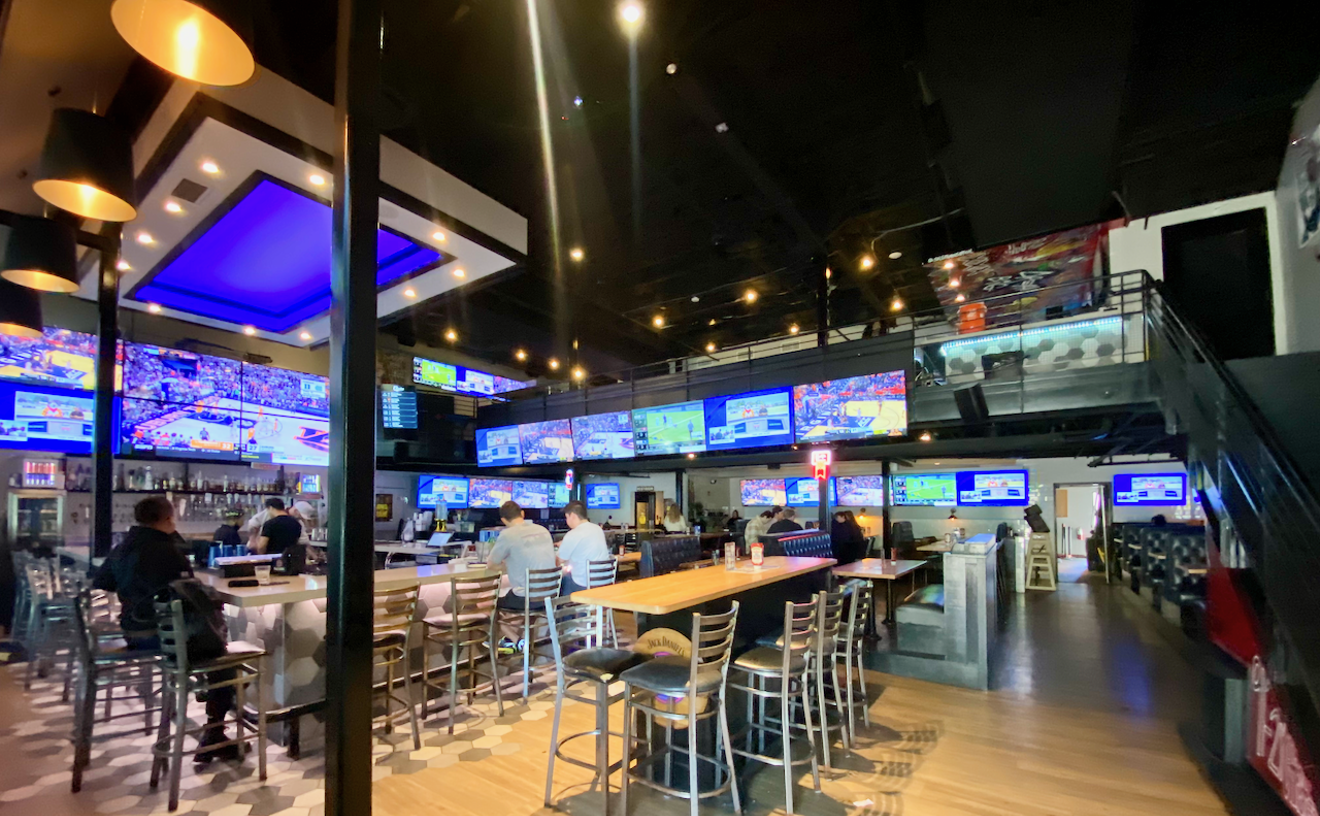Then Chinese foods hit the scene. In the 1980s, Thai restaurants generated a stir. Ethiopian and all manner of other ethnic offerings followed. Today you can find any number of places serving sushi, pho and borscht. "Twenty years ago it was not possible to get a certain curry or a tandoori oven," says Joanne Bondy, chef-partner at Ciudad. "Now you can get anything you want and learn to cook it." Indeed, we buy mangos and star fruit, butter imported from Holland, bok choy and a full range of paprikas at places like Central Market, Whole Foods and Worldwide Foods.
"When you think about the whole world--Ethiopian, Salvadoran, Brazilian, Indian, places all over--I think we have nearly everything covered," muses Steve Kelly, executive chef at Salve!
Of course, some ethnic dishes touched the mainstream over the last century--Mexican cuisine here, for instance, or Polish in Chicago. But widespread acceptance and easy availability are recent phenomena, especially when it comes to authentic ingredients (Rice-A-Roni doesn't count). We live now in a smaller world, unaffected by seasonal growth cycles. We import ingredients from warmer climes during winter, generating enough demand to alter the landscape the world over. Chilean farmers, for example, grow about 70 percent of their agricultural crop specifically for American markets. And Dallas-area chefs constantly meld new ingredients into otherwise familiar recipes. But that, indeed, is the problem.
"You mix and match and combine and fuse," says Nick Badovinus, chef-partner at Cuba Libre. "Is there anything left?"
In other words, do any undiscovered cuisines remain, or have we reached the end of culinary discovery? It's a compound problem. Everyone knows of certain radical foods. In his book A Cook's Tour, New Yorker Anthony Bourdain nibbles on everything from roasted crickets to the still-beating heart of a cobra--happy-hour munchies in some part of the world, apparently. Such "gross out" foods pop into our consciousness occasionally as Survivor challenges or Food Network oddities. "There are so many things around the world that people eat, but that people won't eat here--skate, offal," explains Chris Ward, Mercury's chef-partner. "I can't see people eating snake or all the insects they eat in Asia."
"I'm sure there's something undiscovered, but how much is really accessible?" asks Marc Cassel, executive chef at the Green Room. "There's probably some kick-ass Icelandic, but will it catch on?" Cassel once purchased some insects at an Asian market--for home consumption--so he understands the delicate balance between undiscovered and unpalatable.
In A Cook's Tour, Bourdain puts the fork to a calf's head in France and a whole duck roasted in clay in Vietnam. He drinks lobster blood mixed with grain alcohol and knocks back a bowl of bird's nest soup--a concoction of bird mucus, quail eggs, coconut milk and other cathartic ingredients. But he was writing a book (now a television series), not developing menus for hungry suburbanites.
"We're stuck with cuisines we know and love," says Kent Rathbun, executive chef at Abacus.
Still, what we know and love changed dramatically over the last 20 to 30 years. Bondy refers to Dallas as "a meat and potatoes city that has evolved very well." Immediately following World War II, cuisine offerings in this country flattened out, perhaps driven by a patriotic, anti-Communist wave. "America was a bunch of neighborhoods before World War II," Cassel says. "There was diversity, but it didn't leave the neighborhoods. After World War II, everything became more pedestrian." Americans slowly reawakened to international cuisines through the 1960s. The explosion came later. "In the past 15 years we've seen some of the greatest expansion in food styles in history," Kelly says.
Dallas now features Moroccan, Austrian, Greek, Japanese...and the sheer diversity of international flavors almost precludes the introduction of anything new. "It's a horrible thing to say, 'Nope, it's all been done,'" worries chef Sharon Hage of York St. While acknowledging the untapped markets for offal and insects, she reiterates Cassel's conclusion: "I think all the palatable ingredients are available."
The problem, it seems, is our pernicious accumulation of wealth. "People in North America by and large live a nice lifestyle, so a majority can afford to try different foods," Rathbun says. "But because we have that ability, we become picky." In other words, Americans don't have to rely on innards or insects for sustenance. We can cut the heads off fish, pull the beaks off ducks before tossing them in a pot.
"Americans are not prepared for pure French--liver, intestine, tongue, brain," explains Philippe Naouri, co-owner of Bali Bar. "Americans like steak, salmon, calamari." And as long as we call it calamari, we never have to eat squid.
Rathbun, himself a world traveler and food enthusiast, shies away from organ meats. It's not, then, that we're afraid of different flavors; we just seek them in a more familiar form, hence the popularity of fusion restaurants. Fusion brings together culinary influences from two or more cultures and prepares them in forms acceptable to a mass American palate. "A lot of it is in the way you write the dish, the way you make familiar flavors more predominant," explains Cassel, who prefers "collision cuisine" to fusion. "You balance it out with 'round-eye' flavors. Take Indian food. We use all those flavors in food that Americans recognize."
"In some ways you have to take away some of the authenticity in order to commodify cuisine," agrees Bali Bar's Chris Michael. "You have to speak the language of the American consumer. It's not polluted, but refined, broken down to its most distinguishable elements."
And many chefs enjoy that challenge. "There's so much to go out and see and learn about, and how do I reformat that for the American customer and find something in it they'll enjoy?" Badovinus says. "It's discovery." Rather than scour the world for something utterly new and different, chefs prefer to apply their creativity to traditional, familiar or comfortable dishes--mashed potatoes infused with truffle oil, or garlic, or whatever might excite the patrons.
"People are moving to comfort foods," Ward acknowledges. "People forgot what short ribs taste like, what béarnaise sauce tastes like." Cassel reports a growing interest in "retro recipes"--1950s-era American foods, and others in the industry agree. "What's popular now is really stuff that's been around and reinvented," says James Slaughter, owner of the Firehouse. "History repeats itself in this industry." Fort Worth's star chef Grady Spears believes that the truly undiscovered cuisines hide even deeper in our past: Native American foods. The noted "cowboy chef" often toys with open-flame cooking techniques. "I think Native American is cool," he says. "It's like Southwestern." But the mass audience might spurn parched corn, muskrat stew and other native delicacies.
The real question, to Rathbun, is not the possibility of untried culinary discoveries, but rather the willingness of Americans to extend their interests just a bit further. He knows the boundaries firsthand. While touring Mexico, the refined Abacus chef tried a handful of live bugs. And while he relishes food-related travel and exposure to new and different things, he also admits "there are certain things to which a chef will say 'ehh.'"
Outside of the local oddities, the strange and the unnecessary, have we reached the end of the new, the point where all discovery turns around and heads back? Even the most well-traveled Dallas-area chefs and restaurateurs aren't certain.
"I don't think there's an undiscovered cuisine that the public will support," Kelly says.
And that possibility depresses many chefs. "I would be very disappointed to think we're tapped out," Rathbun says. "It'd be bleak if there was nothing left to learn."










